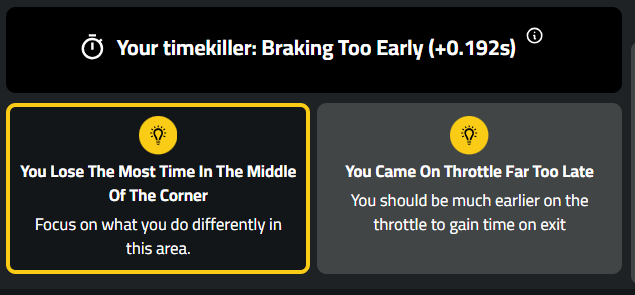Aston Martin V8 Vantage GT3 Hungaroring Hot Lap Analysis
Let’s take a look at this hot lap of Hungaroring in the Aston Martin V8 Vantage GT3 driven by HYMO.
The Track
Hungaroring, just outside Budapest, Hungary, stands out in the racing world for its technical and twisty nature. Opened in 1986, it broke new ground as the first Formula 1 track behind the Iron Curtain. The 4.381-kilometre circuit, with its 14 turns, is akin to a giant go-kart track for Formula 1 cars, emphasising technical skill over sheer power. Its series of slow corners and short straights make it a high-downforce circuit where overtaking is notoriously challenging, putting a premium on qualifying performance and race strategy.
The Formula 1 Hungarian Grand Prix, hosted annually at Hungaroring, is a standout event that highlights the circuit's unique challenges. Drivers and teams must meticulously work to extract every bit of performance, focusing on aerodynamic efficiency and mechanical grip to navigate the track's tight turns and technical sections successfully.
Good news for you, the HYMO setup used in this hot lap video is available for you to try HERE.
Analysis
The analysis below uses the Track Titan platform to compare a HYMO reference hotlap in blue to one of the Track Titan community drivers through Segment 2. The story is in the data. We observe that the community driver brakes too early. Their trailbraking technique is however very good. Also they dive a little early for the inside line. This means that they have a tighter exit, and delays their throttle application to full on exit. The overall time loss is about 0.1s
.png)
You can analyse every other turn in the Track Titan platform; see reference lap here.
You can also take it to the next level and compare it against your own driving, just sign up to Track Titan for FREE today here.
Sim Racing Top Tips
Wheel rate, often referred to as spring rate in the context of vehicle suspension, is a critical setting in GT3 racing and sim racing platforms like Assetto Corsa Competizione. It represents the stiffness of the springs in the car's suspension system and plays a significant role in determining the vehicle's handling characteristics.
A stiffer wheel rate (higher spring rate) generally results in less body roll and a more responsive car, particularly beneficial in high-speed corners where maintaining aerodynamic stability is crucial. However, it can also lead to a harsher ride, as the car will be less compliant over bumps and kerbs, potentially causing a loss of grip on uneven surfaces.
Conversely, a softer wheel rate (lower spring rate) allows more body roll and can provide better grip on bumpy or uneven tracks by keeping the tyres in contact with the road. This setup can offer improved traction and a smoother ride, but it may also result in slower response times during quick direction changes, as the car will take longer to settle after a turn.
Adjusting wheel rate settings is about finding the right balance between stability, grip, and responsiveness, tailored to the track's characteristics, driving style, and prevailing conditions. It's a crucial part of vehicle setup that requires careful consideration and testing to optimise performance.
Don't know what you can do to go faster? Use the HYMO hotlap to find out.
To see full lap analysis of your own driving, you can sign up to Track Titan for FREE today here.


.png)























